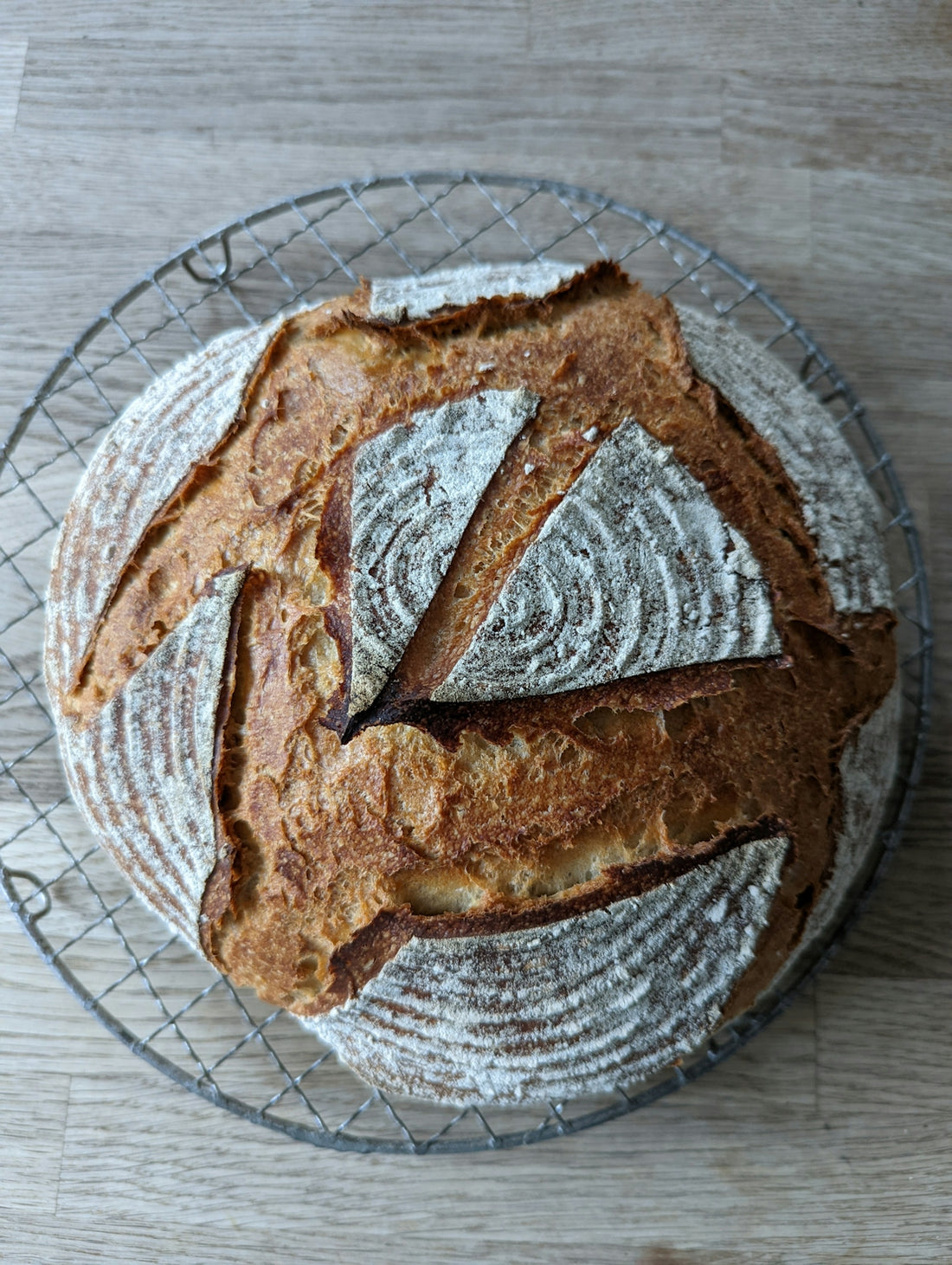
Solving Homemade Sourdough Baking Queries: An FAQ Compilation
Welcome to the world of sourdough! With its tangy flavor and perfect crust, there's nothing quite like homemade sourdough bread. Yet, embarking on the sourdough journey can bring about a slew of questions. Fear not, as we've compiled a comprehensive FAQ to help you navigate your way through this baking art form. Whether you're new to sourdough or looking to refine your skills, this guide, featuring tips on sourdough starter care, baking techniques, and more, is for you.
What is Sourdough Starter and How Do I Begin?
A sourdough starter is a mixture of flour and water that cultivates wild yeast and lactic acid bacteria, essential for sourdough fermentation. This natural leavening agent is the heart of good homemade sourdough bread.
How to Start
- Ingredients: You need organic flour and non-chlorinated water.
- Day 1: Mix equal parts flour and water in a jar.
- Days 2-5: Discard half and feed with fresh flour and water daily.
- Day 6: If bubbles form and the aroma is tangy, your starter is ready.
For best results, consider acquiring a Sourdough Starter Kit to get the right tools from the get-go.
How Do I Feed and Maintain My Sourdough Starter?
Maintaining a consistent feeding schedule is crucial.
- Feeding Schedule: Feed your starter once daily if kept at room temperature, or once a week if stored in the fridge.
- What to Use: Use equal parts flour and water by weight.
- Consistency: It should be the texture of a thick batter or smooth paste.
Storing Your Starter
To know more about how to store sourdough starter properly, visit Italian Sourdough.
Sourdough Starter Troubleshooting: Common Issues
- No Bubbles: Your starter might need more time or warmth.
- Bad Smell: If it smells offensive, discard and start anew.
- Mold Presence: If you see mold, it’s best to start from scratch to ensure quality and health safety.
Knowledge of sourdough starter troubleshooting can save you a lot of effort and ingredients.
Homemade Sourdough Bread Recipe for Beginners
Easy Sourdough Bread
Here's a straightforward recipe to guide you:
- Ingredients: Sourdough starter, flour, water, salt.
- Method:
- Mix ingredients and let the dough bulk ferment for 4-5 hours.
- Shape into a loaf and place in a Rattan Fermentation Basket.
- Allow it to proof for 3-4 hours.
- Bake in a preheated Dutch Oven.
Sourdough Baking Tips for Perfect Loaves
- Bread Scoring Techniques: Use a sharp blade to score the top, allowing steam to escape and controlling the rise.
- Crispy Crust: To achieve a crispy sourdough crust, bake at high temperatures and let it cool before slicing.
Advanced Sourdough Techniques and Considerations
Wild Yeast Fermentation
This process gives sourdough its unique flavor and texture. Patience is key as wild yeast takes longer to ferment dough compared to commercial yeasts.
Sourdough vs Regular Bread
Sourdough fermentation breaks down gluten, which can be better for digestion and even suitable for some with gluten sensitivities.
Sourdough for Diabetics
Sourdough's slow fermentation process may help in managing blood sugar levels, making it a potentially better option for diabetics over regular bread.
Tools for the Home Baker
Successful sourdough baking is greatly aided by good tools. Essential items include:
- Dutch Oven: Essential for maintaining consistent heat and moisture.
- Silicone Baking Mat: For easy-off baking and minimizing cleanup, see our Baking Mat.
- Rattan Basket: For shaping and proofing.
Exploring Sourdough Bread Options
Consider expanding beyond the traditional loaves:
- Sourdough Pizza Dough: A tangy twist on classic pizza dough.
- Sourdough Bagels: Chewy, flavorful breakfast treats.
Sourdough Discard Recipes
Use your starter discards in creative ways:
- Pancakes: Add to pancake batter for a savory tang.
- Crackers: Mix with flour and seasonings for crunchy snacks.
Is Sourdough Starter with a Long Legacy Better?
Legacy starters can enhance flavor complexity, but a new starter can be just as viable. The key is the cultivation and care, rather than its age.
Conclusion
The art of sourdough baking combines tradition, science, and a bit of patience. With the right knowledge, you too can transform simple ingredients into something truly special. Whether you're learning how to shape sourdough bread or curious about the benefits of sourdough fermentation, these tips should provide a solid foundation.
Happy baking, and for more resources, visit Italian Sourdough.
This guide covers the basics and more advanced topics, melding tradition with practical tips to ensure your foray into sourdough is a successful one!
